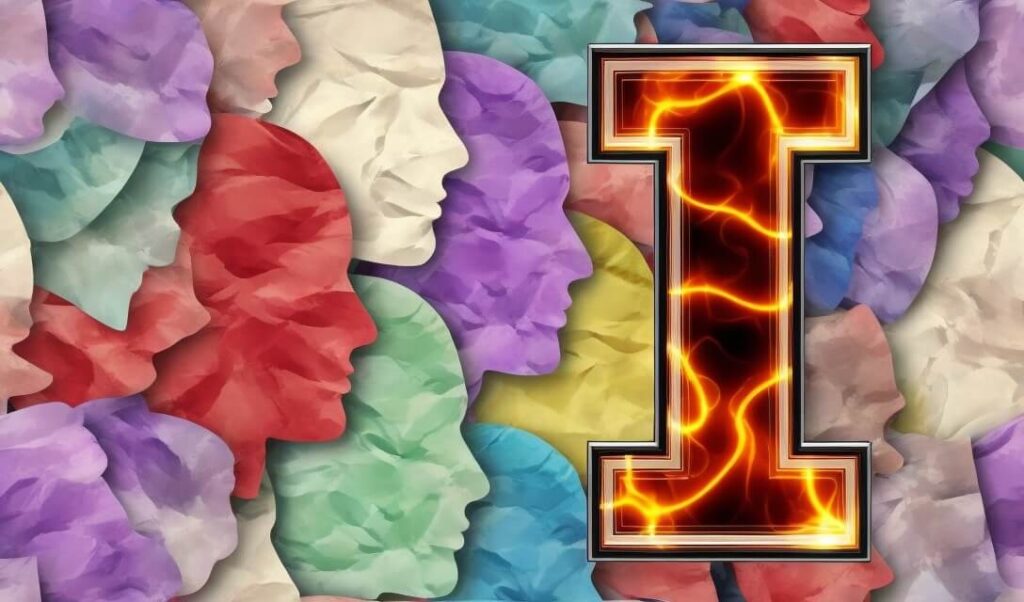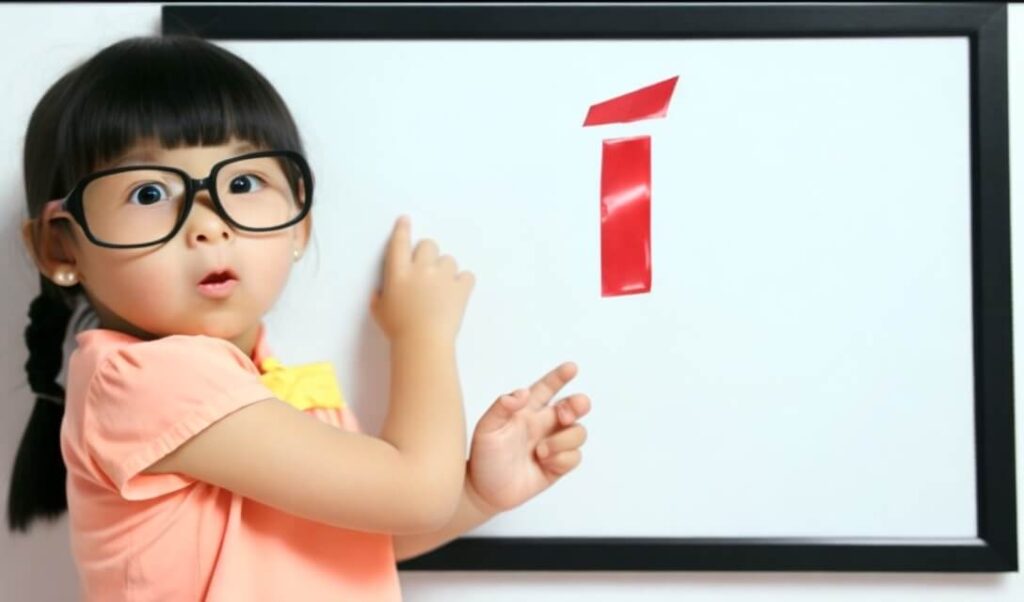The letter I, though small in stature, holds a significant place in the realm of language and communication. It is a letter that is both simple and complex, with a history and significance that stretches back thousands of years. The letter I is more than just a component of the alphabet; it is a symbol, a sound, and a representation of the self. It is the embodiment of individuality, the essence of identity, and the core of introspection. The meaning of the letter I is deeply rooted in our language and culture, and its influence is seen in every word we speak and write.
The letter I is unique in its ability to stand alone as a word, representing the self in a powerful and profound way. It is the only letter that can claim this distinction, making it irreplaceable in our language and communication. The letter I is also the fifth most frequently used letter in the English language, further emphasizing its importance and ubiquity.
The letter I is not just a letter, but a symbol of inquisitiveness and innovation. It is the starting point for words like “imagine,” “inspire,” and “invent,” words that embody creativity and forward-thinking. It is also the beginning of “inquiry” and “investigate,” words that represent our innate curiosity and desire for knowledge.
In this article, we will delve into the fascinating world of the letter I, exploring its history, its influence in different languages, its various forms and styles, and its spiritual and symbolic significance. We will also look at how the letter I is taught and learned, and how it is used in words and names. So, let’s embark on this journey of discovery, and unfold the majesty of the letter I.
The Origins and Evolution of Letter I

The letter I has a rich and intriguing history, with roots that can be traced back to the Proto-Indo-European language, the ancestor of many of the languages spoken today. The symbol for the letter I in this ancient language was “I,” believed to have been derived from the Proto-Indo-European word “is.”
The letter I was most likely adapted from the Latin alphabet during the time of the Roman Empire, when the Romans adopted the language of the indigenous people living in their territory. This Latin influence gave the letter I its pronunciation of the ï sound, which has remained consistent for the past 2000 years.
The English letter I, as we know it today, has also been influenced by the Roman letter I. The Romans used the letter I to represent both the vowel sound /i/ and the consonant sound /j/. Over time, the letter J was created to represent the consonant sound, while the letter I continued to represent the vowel sound.
The letter I has also evolved in its visual form over the centuries. In the early Roman times, the letter I was often written as a vertical line, similar to its current form. However, in the Gothic script used in the Middle Ages, the letter I was often written with a curved top, giving it a different appearance.
The Greek letter I, known as Iota, is also closely related to the English and Roman letter I. The Greek letter Iota is the ninth letter of the Greek alphabet and represents the sound /i/. It is interesting to note that the Greek letter Iota is also used in English as a term meaning a small amount, reflecting the small size of the letter I.
The evolution of the letter I is a testament to the dynamic nature of language and communication. It shows how language adapts and changes over time, influenced by different culturesand societies. The letter I, with its English and Roman roots, its different forms in Gothic script, and its Greek counterpart, is a perfect example of this linguistic evolution.
The Multilingual Influence of Letter I

The influence of the letter I extends beyond the English language, making its mark in various languages around the world, particularly Spanish and Greek. The letter I, or “i” as it is known in Spanish, is a crucial component of the Spanish alphabet. The pronunciation of the letter I in Spanish is similar to its English counterpart, producing the sound /i/ as in “see” or “me.”
The letter I in Spanish is used in a variety of words and phrases, contributing to the rich and vibrant Spanish language. It is also used in Spanish grammar rules, such as the formation of the past tense and the creation of plural nouns.
The Greek letter I, known as Iota, also plays a significant role in the Greek language. As mentioned earlier, Iota is the ninth letter of the Greek alphabet and represents the sound /i/. The Greek letter Iota has also influenced English, with the term “iota” being used in English to refer to a small amount.
The pronunciation of the letter I varies across languages, reflecting the diversity and richness of global communication. In English, the letter I can represent different sounds depending on its position in a word and the letters around it. For example, in the word “like,” the letter I represents the sound /ai/, while in the word “in,” it represents the sound /i/.
The influence of the letter I in different languages underscores its importance in global communication. It is a letter that transcends linguistic boundaries, connecting different cultures and societies through the common thread of language.
Writing the Letter I: Styles and Signatures
The letter I can be written in a variety of styles, each with its unique charm and elegance. The most common form of the letter I is the printed form, which is a simple vertical line. This form of the letter I is used in most printed materials and is the form that children first learn to write.
The cursive form of the letter I adds a touch of elegance and sophistication to the letter. In cursive writing, the letter I is written as a vertical line with a loop at the top and bottom. This form of the letter I is often used in formal writing and in signatures, adding a personal and unique touch to the written word.
The letter I can also be written in a variety of other styles, including the Gothic style, which features a curved top, and the Roman style, which is a simple vertical line. The letter I can also be written in capital and lowercase forms, each with its unique style and usage.
The capital letter I is used at the beginning of sentences and in proper nouns, while the lowercase letter I is used in the middle and end of words. The capital letter I is also used as a symbol of the self, representing the individual in a powerful and profound way.
The letter I can also be written in a larger or smaller size, depending on the context and the writer’s preference. A big letter I can be used to emphasize a point or to make a statement, while a small letter I can be used to add a subtle touch to a piece of writing.
The versatility and adaptability of the letter I in writing reflect its importance and significance in our language and communication. Whether it’s a cool letter I in a graffiti art piece, a cursive letter I in a love letter, or a capital letter I in a formal document, the letter I makes its mark in every piece of writing.
Sounds and Syllables: The Phonetics of Letter I

The letter I, with its distinct pronunciation, adds a melodic quality to language. Understanding the sounds and syllables associated with the letter I is essential for effective communication and proper pronunciation.
In English, the letter I can have multiple pronunciations, depending on its position in a word and the surrounding letters. The long /iː/ sound is commonly heard in words like “kite,” “time,” and “bright.” This elongated sound is created by holding the position of the mouth and vocal cords to produce a clear and sustained “ee” sound.
On the other hand, the short /ɪ/ sound is heard in words like “sit,” “bit,” and “in.” This shorter sound is created by slightly relaxing the mouth and vocal cords, resulting in a quick and clipped “ih” sound.
The letter I can also be part of diphthongs, which are combinations of two vowel sounds within the same syllable. For example, in the word “ride,” the letter I is pronounced as a combination of the /aɪ/ sound, resulting in the distinct “ah-ee” sound.
Understanding the phonetic variations of the letter I helps to ensure accurate pronunciation and effective communication. By paying attention to the specific sounds and syllables associated with the letter I, individuals can enhance their spoken language skills and convey their thoughts and ideas clearly.
The Symbolism and Spirituality of Letter I

Beyond its linguistic and phonetic significance, the letter I carries symbolism and spiritual connotations. It represents more than just a letter; it embodies qualities that resonate with the human experience.
In many spiritual and philosophical traditions, the letter I symbolizes the self and individuality. The spiritual meaning of the letter I represents the idea of self-awareness, introspection, and identity. The shape of the letter I, with its verticality, resembles a person standing tall and proud, embracing their unique existence.
The letter I is often associated with the concept of intuition. It reflects our innate ability to delve into our inner selves, to connect with our deepest thoughts and emotions. The act of introspection, of looking inward, is represented by the letter I, reminding us to explore our inner worlds and discover our true selves.
Moreover, the letter I holds significance in various spiritual practices, particularly in meditation and mindfulness. It is believed to be connected to the third eye chakra, located in the center of the forehead. This chakra is associated with intuition, insight, and spiritual awareness. By focusing on the letter I and its symbolic meaning, individuals can deepen their spiritual practices and cultivate a greater sense of self-awareness.
The letter I’s symbolism extends beyond the individual level. It also represents the interconnectedness of all beings. Just as every person is unique, every I is unique, yet they are all part of a greater tapestry of communication and understanding.
Let’s Spell it Out: Words and Names Starting with I

The letter I opens the door to a world of words, names, and places, each with its own significance and meaning. Exploring the vast vocabulary and rich tapestry of names starting with the letter I allows us to appreciate its impact on language and communication.
When it comes to words, the letter I contributes to a plethora of terms that capture various aspects of life. From “innovation” to “inspiration,” the letter I is synonymous with creativity and forward-thinking. It ignites the spark of imagination and encourages the pursuit of new ideas.
The letter I also lends itself to descriptive words that evoke emotions and experiences. Words like “intimate,” “irresistible,” and “intriguing” paint vivid pictures and create connections between individuals and their surroundings.
In the realm of names, the letter I adds a touch of elegance and distinction. Names like Isabella, Isaac, Ivy, and Ian resonate with strength, grace, and individuality. They carry the legacy of those who bear them and contribute to the cultural tapestry of diverse identities.
Furthermore, the letter I is intricately woven into the fabric of place names. From iconic cities like Istanbul and Paris’ Île de la Cité to natural wonders like Iceland and the Indian Ocean, the letter I leaves its mark on the geographical landscape. It connects us to these locations and reminds us of the vast beauty and diversity of our world.
Exploring words and names starting with the letter I allows us to appreciate the breadth and depth of its impact on language and communication. It reflects the human experience, sparks our imagination, and connects us to the rich tapestry of words, names, and places that shape our lives.
Teaching and Learning the Letter I

The letter I plays a crucial role in early childhood education, as it is one of the foundational letters taught to young learners. Introducing the letter I helps children develop their reading and writing skills, enabling them to communicate effectively.
In preschool and kindergarten settings, the letter I is often taught through various interactive and multisensory activities. Children engage in letter recognition exercises, tracing the letter I, and exploring its sound and shape. These activities foster a sense of familiarity and confidence in young learners, setting them on the path to literacy.
The letter I also holds a special place in show and tell activities. Children are encouraged to bring in items that start with the letter I, such as an iguana, an ice cream cone, or an instrument. This hands-on approach allows children to make connections between the letter I, objects, and their own experiences, enhancing their understanding and memory retention.
In the natural world, the letter I can be found in various elements of nature, providing opportunities for outdoor learning and exploration. From the majestic shape of an iris flower to the meandering course of a river, the letter I is interwoven into the fabric of the natural environment. Engaging with the letter I in nature encourages a sense of wonder and curiosity about the world around us.
Songs and rhymes are also effective tools for teaching the letter I. The letter I song, with its catchy tune and repetition, helps children internalize the letter’s sound and shape. Through music and movement, children develop phonemic awareness and reinforce their understanding of the letter I.
Additionally, printable resources, such as worksheets and coloring pages, provide further opportunities for practice and reinforcement. These materials engage children in meaningful and enjoyable activities, promoting their letter recognition and fine motor skills.
By incorporating various teaching methods and resources, educators can create a stimulating and inclusive learning environment for children to explore and master the letter I.
Embracing the Letter I
In conclusion, the letter I is a powerful and multifaceted symbol in language and communication. It embodies inquisitiveness, innovation, and individuality, shaping our understanding of ourselves and the world around us.
From its origins and evolution to its influence in different languages, the letter I has left an indelible mark on human communication. It offers a myriad of possibilities for expression, creativity, and self-reflection.
As we unfold the majesty of the letter I, we discover its significance in words, names, and places. It enhances our ability to communicate effectively and evokes emotions through its phonetic variations. The letter I invites us to explore our inner selves, connecting us to our intuition and spirituality.
Teaching and learning the letter I cultivates a strong foundation for language acquisition and literacy skills. Through engaging activities and resources, children develop an appreciation for the letter I and its role in effective communication.
In embracing the letter I, we embrace the power of language, the beauty of self-expression, and the vastness of human connection. So, let us continue to celebrate the letter I and its inquisitive, innovative, and irreplaceable nature in our communication and our lives.




